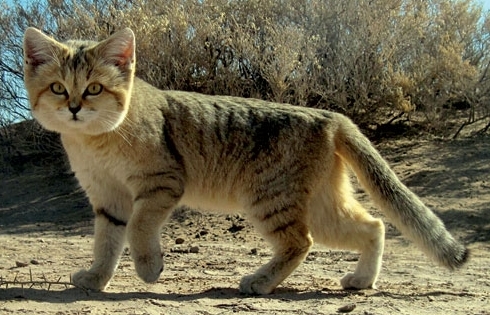The Sand cat scientific Specification
| Kingdom: | Animalia |
| Phylum: | Chordata |
| Class: | Mammalia |
| Order: | Carnivora |
| Suborder: | Feliformia |
| Family: | Felidae |
| Subfamily: | Felinae |
| Genus: | Felis |
| Species: | F. margarita |
| | |
Today we are going to know about the cutest endangered cat, Anyone who sees her goes after her in love.The sand cat is not extinct. The smallest of all wild cats, living in sandy and stony deserts far from water sources. The Cutest Endangered Species sand cat head-and-body length ranges from 39cm – 52cm (15"–20") with a 23cm – 31cm (9.1"–12.2") long tail. Its 5cm–7cm (2.0"–2.8") long ears are set low on the sides of the head, Which helps them to mix with the sand at prey time.

Image by Darren Coombs from Pixabay
Sand cats like to rest during the day, much like black-footed cats, and They go hunting at night to find food On average, they cover an area of 5 km to 4 km every night search for small rodents and birds. In spring, the female gives birth to 2 to 3 kittens, Weight at birth is 50 – 60 grams. which become sexually mature around the age of 1 year.
TimVickers / Public domain / Wikimedia
The Sand Cat is the only cat that survives essentially in the desert. A sand cat can run as fast as 25 mph. They can also be far away from the water. They can survive dehydration from their prey food. Sand cats usually prey on rats, Sometimes they also prey on birds, spiders, and reptiles. Since they live in the desert, they have to deal with venomous snakes. Sand cats can also kill a venomous snake.
Arpingstone / Public domain / wikimidea
The Sand cat Lifespan in the wild is unknown, but In human care, sand cats can live to be 13 years old.
Some people hunt sand cats, keep them in cages and sell them on the black market. Many people buy sand cats for pets. Locally, sand cats may be threatened by the pet business. Sand cats are occasionally reported to be shot in Saudi Arabia But that's not right, they love to live a wild environment. We should all understand that wild animal are beautiful in the forest.







0 comments:
Post a Comment